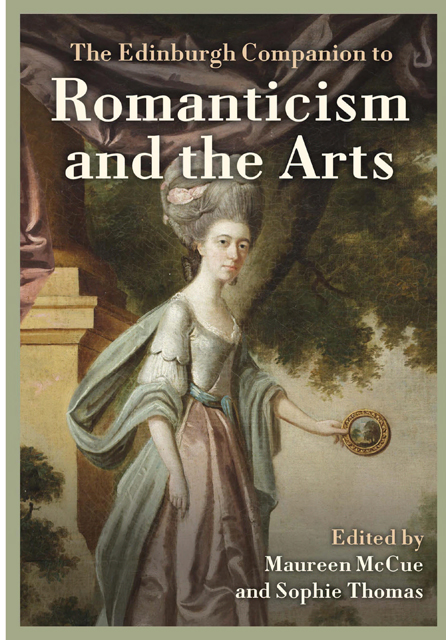10 - Exhibitions Culture, Consumerism and the Romantic Artist
Published online by Cambridge University Press: 25 April 2023
Summary
The proliferation of public art exhibitions in the late eighteenth and early nineteenth centuries was a vital factor in accelerating the modernising transformation of the visual arts in Britain. The scale and depth of change is readily captured with some facts and figures. In 1759 London was home to about 740,000 people, the population having increased unsteadily since the beginning of the century when it numbered about 600,000. Perhaps 200 of these Londoners were visual artists (Myrone 2020, 194). Most of these were closely connected and located within a limited geography, being mainly clustered around Covent Garden in central London. There were paintings to be seen in the theatres, or in the supper-boxes at the pleasure ground of Vaux-hall Gardens, in art collections in private homes or by visiting artists’ studios. There were important collections in royal palaces and the houses of the great and the good but access to these was generally very limited, and the cultural legacy of Protestant Reformation meant there were very few paintings on show in churches. The easiest way to see Old Master paintings was at public auctions. In 1759 there were at least twenty-one of these in London, although the quality and range of pictures was generally not impressive (Lincoln and Fox 2016, fig. 4).
In 1831 the fourth national census, taken on 30 May, established that the population of greater London was over 1.7 million people. Perhaps 2,000 of London’s population were occupied as visual artists. A reasoned estimate made in 1818 was that there were 1,000 in London; by the time of the 1841 census, the first time that individual’s occupations were captured, over 4,000 were recorded, heavily concentrated in London (Myrone 2020, 194). The Royal Academy of Arts, the dominant art institution, was over half a century old, having been founded in the winter of 1768–9. Since opening, over 1,550 young men had formally registered as students at the Academy’s drawing schools (Hutchison 1960). Artists were distributed across the metropolis, but the most successful congregated in the central areas of Westminster and Marylebone.
- Type
- Chapter
- Information
- The Edinburgh Companion to Romanticism and the Arts , pp. 184 - 200Publisher: Edinburgh University PressPrint publication year: 2022



